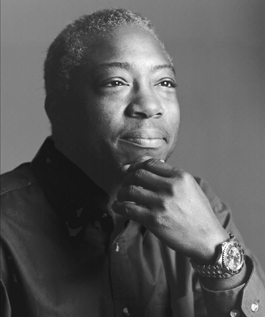home | metro silicon valley index | the arts | visual arts | review

Photograph by Jana Marcus
Both Sides Now: 'Lyle,' who transitioned to male in his late 30s, appears with photographer Jana Marcus Jan. 24 at Stanford.
Breaking Out
An award-winning study of transgendered men and women comes to Stanford
By Traci Hukill
IN 2003, Jana Marcus was studying photography at SJSU and commuting to classes from the Santa Cruz house she shared with a 28-year-old UC–Santa Cruz doctoral candidate. One day the housemate, the rare male student of feminist studies, took Marcus aside and told her a secret: until five years earlier, he had been a woman.
"Blew my mind," says Marcus. "I knew about transgendered women—men who became women—but I didn't know women could become men. It just wasn't something in my scope of understanding."
The desire to learn about a little-understood segment of society drove Transfigurations: The Making of a Man. Besides doubling as Marcus' master's thesis, the project provided the seed for an emotionally affecting exhibit that has expanded to include studies of male-to-female transgendereds and made its way all over the country and serving as a rallying point for the transgendered community wherever it goes. Transfigurations now shows at Stanford's Clayman Institute for Gender Research through March 21.
Transfigurations has been, Marcus says, the gift that keeps on giving. When The Making of a Man opened in May 2005 at SJSU, with 20 large-format black-and-white photographs accompanied by text from interviews with the subjects, the response was emotionally overwhelming.
"Hundreds of people attended," Marcus recalls. "People were there with their kids, saying they were so happy because now their 12-year-old, who had been thinking of transitioning, could see that people had successfully done it. After an hour and a half, I had to go outside, and I broke down in tears, because I had no idea how powerful it would be."
For a group as severely marginalized as the transgendered community, Marcus' lens had a legitimizing effect that led to a rush of eager exhibitionism. It took four months just to get a single transgendered man to agree to be photographed; within six months, volunteers all over the Bay Area were clamoring to be photographed. The project had helped give face and voice to transgendered people.
Part of the show's popularity is no doubt due to its contemporary look. Male and female subjects, running the gamut from a buffed LAPD beat cop to a 52-year-old woman who hid the truth about her birth gender from her first husband, are photographed in black-and-white in a studio, usually looking directly at the camera—empowered and "returning the dominant gaze," Marcus says—in the straightforward but powerful style of portraiture immortalized by Richard Avedon. A fellow student even complained that the photographs looked like Gap ads.
The show (62 pieces in all) avoids sensationalism; most of the subjects are clothed, and except for the "Aidan" series on the transition into young manhood—showing waist-up progress from hormone therapy to breast removal to scarred but flat and hairy chest—it dwells little upon the painful procedures transgendered folk undergo. But pain of another sort is plenty evident in the carefully distilled text accompanying each photograph. For Cecilia, 40, the road to self-discovery included drugs, a leap from a four-story building and learning upon recovery that she was HIV-positive. Other women, like Nori, 32, strive to attain the feminine ideal as seen on TV. Many of the men, on the other hand, struggle with figuring out how macho to be.
Marcus was struck by the difference in challenges faced by transgendered men and women. "The transgendered men, so many were so self-actualized by the time they came to the end of their treatments. They had thought so much about 'What kind of man do I want to be in the world?'" Marcus says. "It was very different with men becoming women. When I asked them what kind of woman they wanted to be, most hadn't thought about it. It all comes back to our male-dominated society. The men had often had 25, 30, 40 years of learning how not to show emotions. And now they had to let that go and find out what it means to them to be a woman."
TRANSFIGURATIONS, photographs by Jana Marcus, ends March 21 at Serra House, 589 Capistrano Way, Stanford; free. On Jan. 24 Marcus and three of her subjects give a 4:30pm talk at Tressider Memorial Union, 459 Lagunita Dr., followed by a reception at Serra House. (650.906.2375)
Send a letter to the editor about this story.
|
|
|
|
|
|